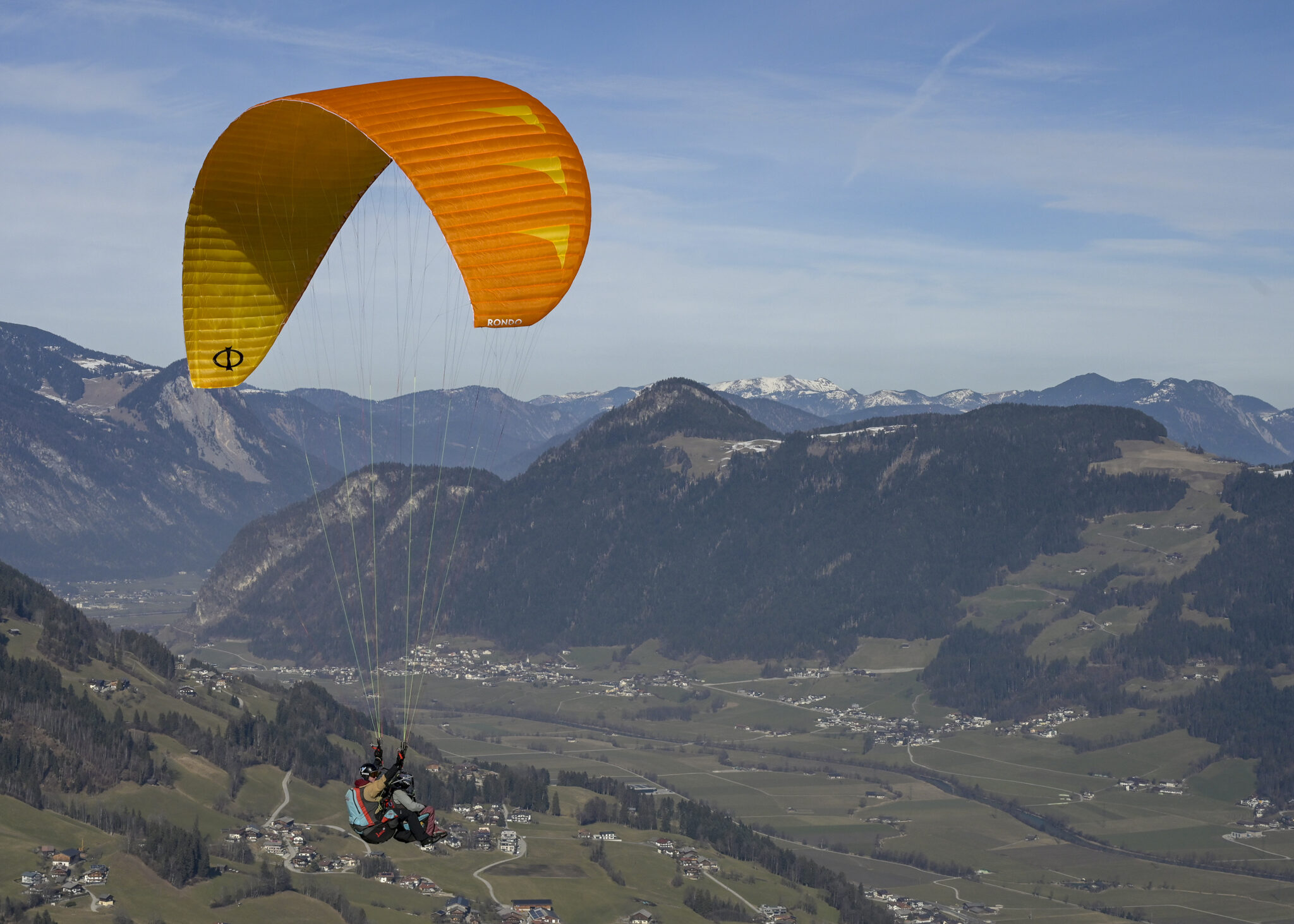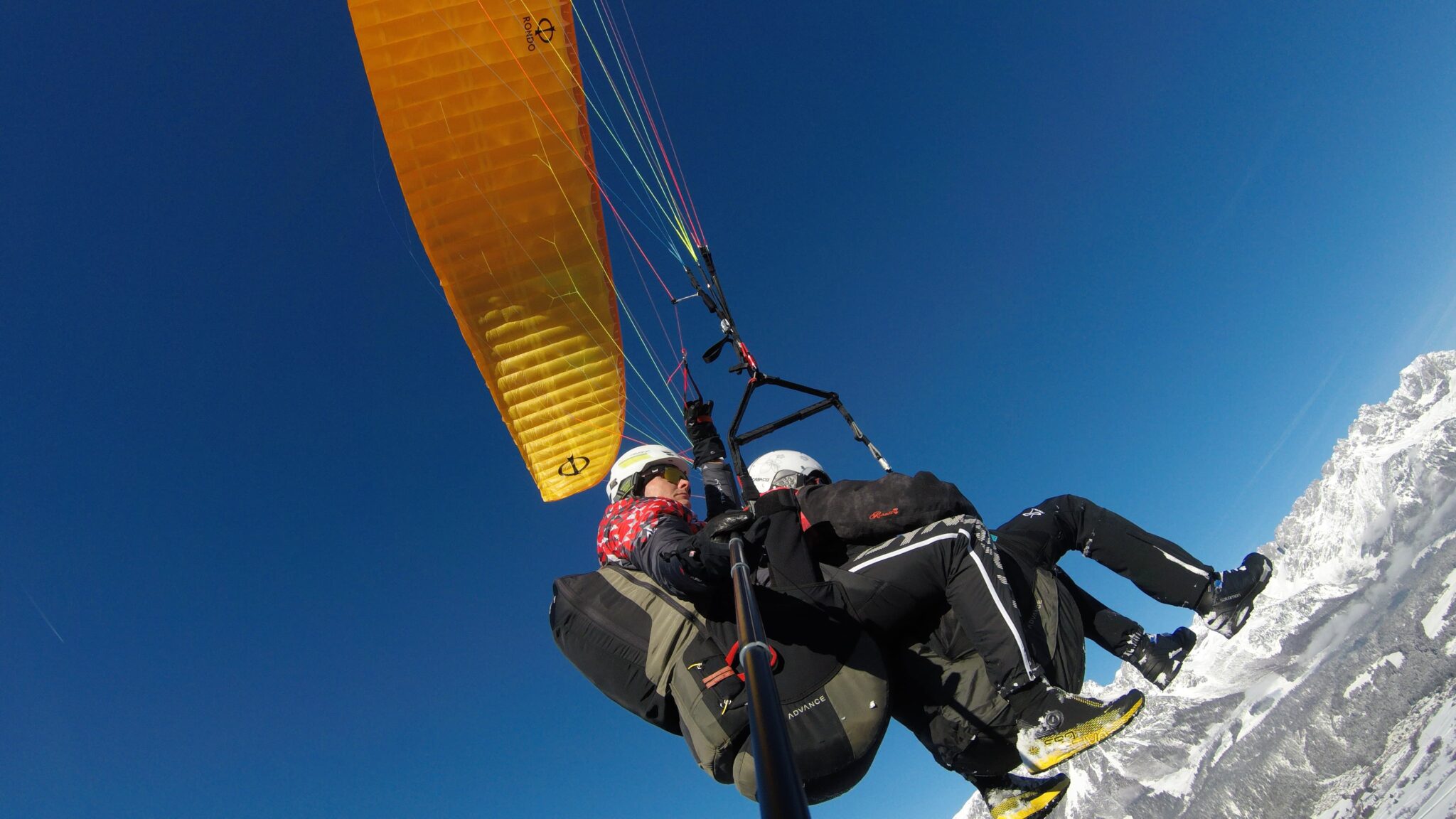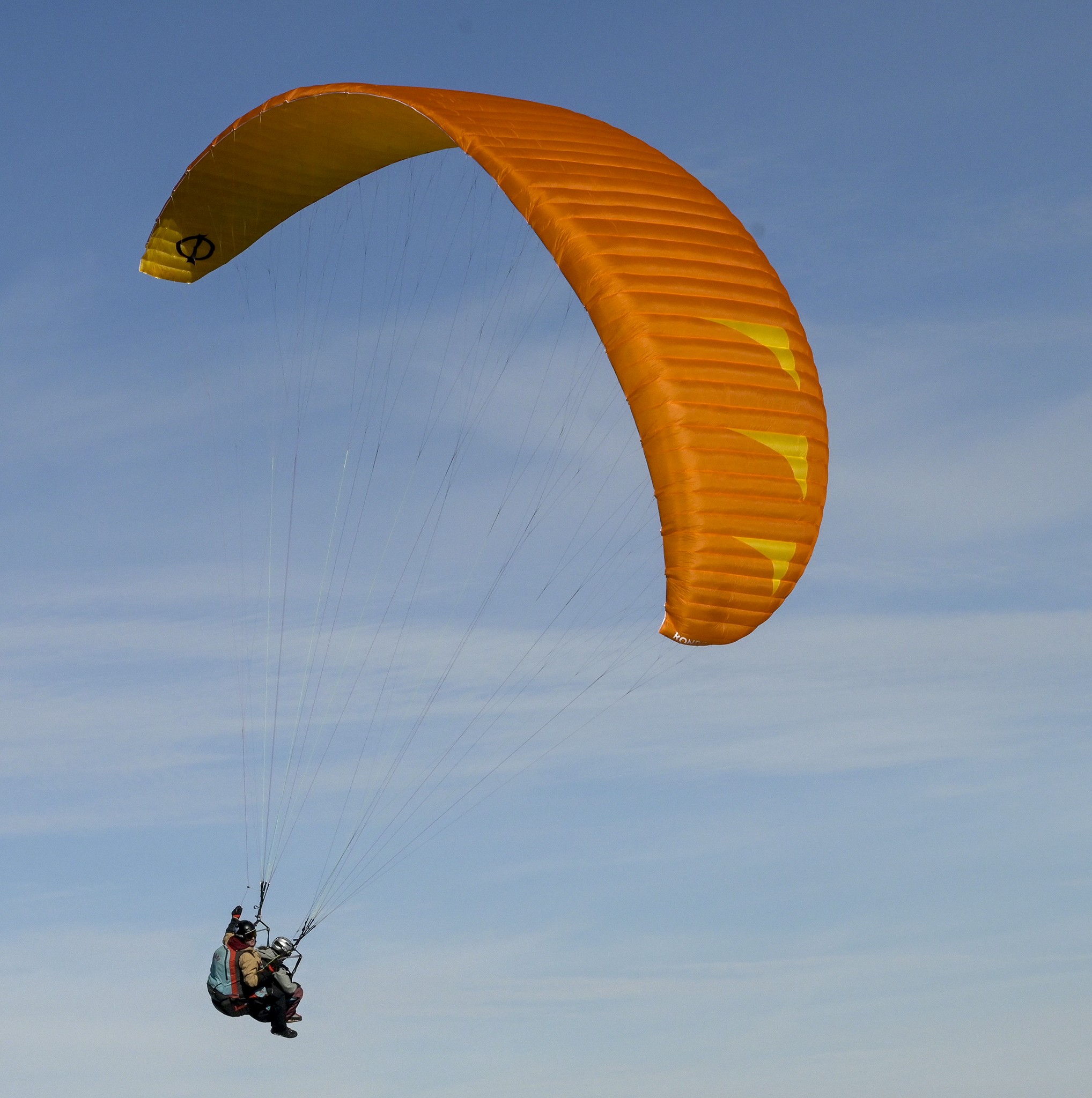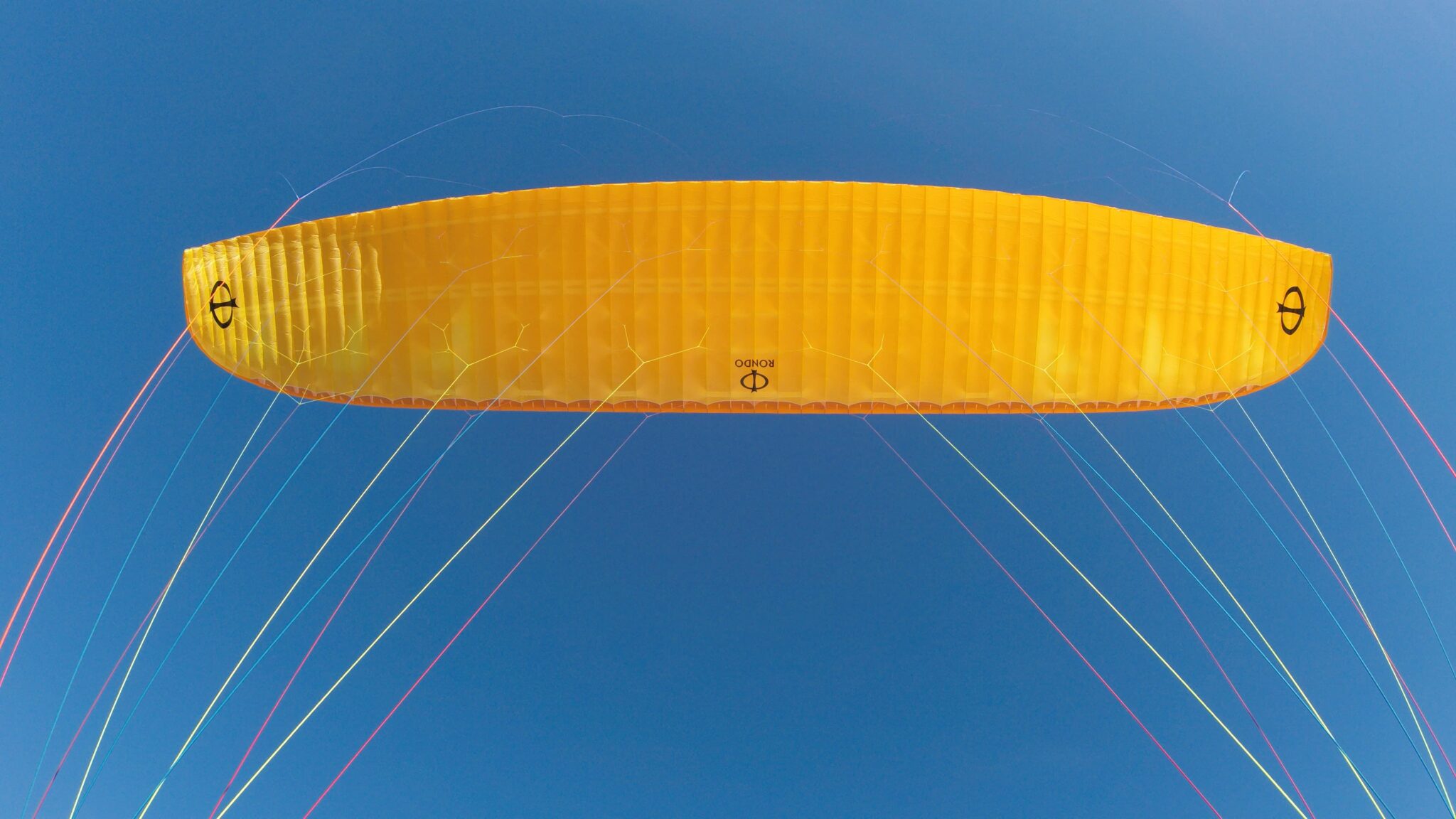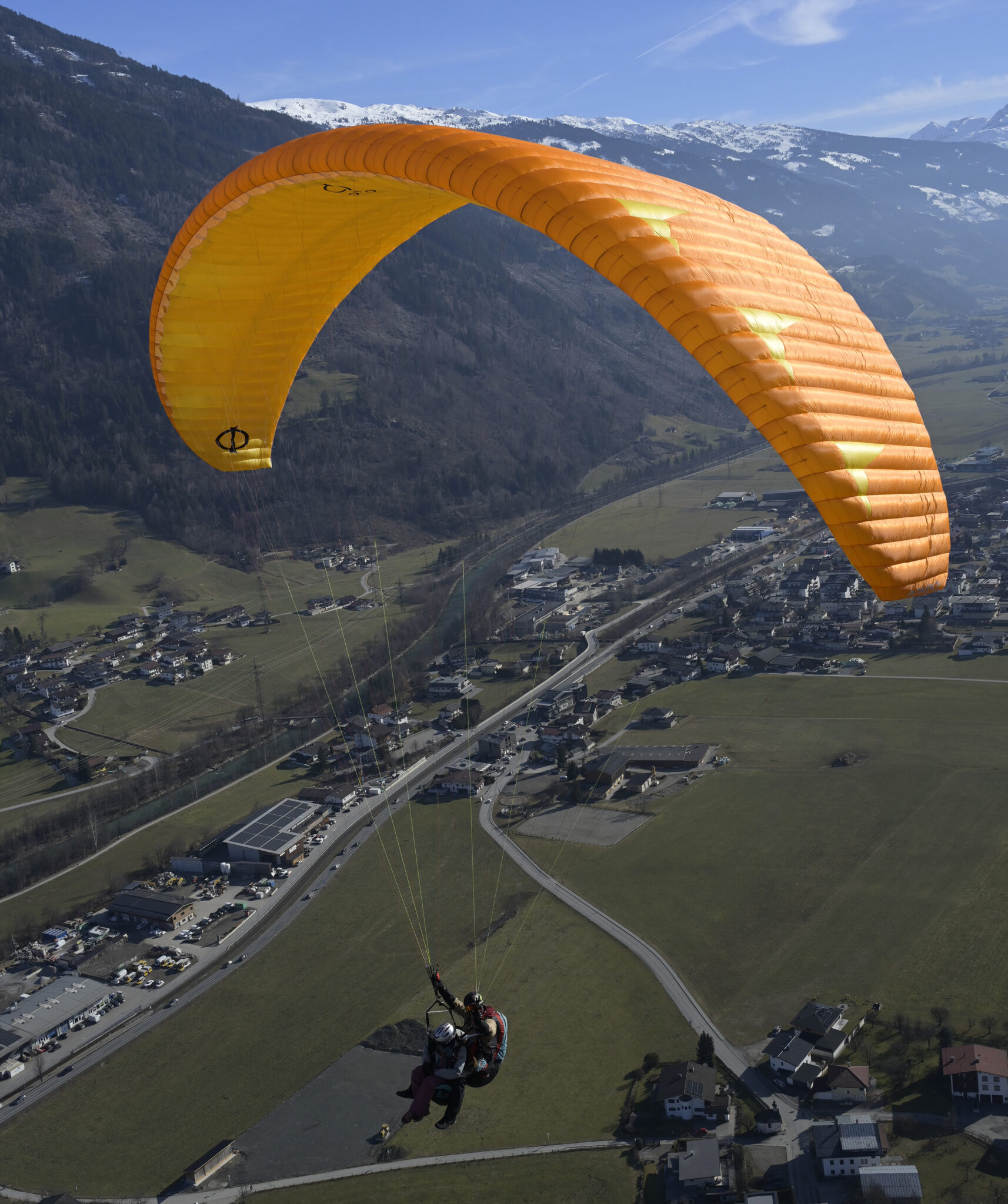Phi Rhondo
$5,200.00 – $5,250.00Price range: $5,200.00 through $5,250.00
Shared joy is doubled joy!
Shared performance is doubled performance!
As most biplace wings on the market are low B concepts, we heard of the demand for a high performance wing, that is stylish and a joy to fly with.
So here is the RONDO: a high aspect ratio High B wing!
The performance is amazing: you need a high aspect ratio 2 liner to keep up to shoot detail photos!
Description
RONDO Technical Features
With 58 cells, mini-ribs and aspect ratio of 5.7, the RONDO is high end B.
But beyond that, we have developed new technology around NITINOL rods!
The new neoprene padding on the leading edge distributes the pressure of the Nitinol rods over a larger area and makes the wing nose significantly more robust against abrasion.
Nitinol in general is offering very easy packing and low stress by being very form stable. Of course the takeoff behavior is outstanding: a must have for a modern biplace wing.
The RONDO is using a new type of “double reef” brake system. Never ever the brake pressure on a tandem was that low, with still having full feedback and control!
On top of the “TO DO” list was “low weight”: we introduced a new, extremely efficient and form stable internal structure. The diagonal fingers are split into narrow stripes with additional tapes. The internal camera views make you feel like being in an old huge cathedral: wide open, weightless bows: check it out!
Finally the big size of the RONDO (certified up to 240kg) is still below 7kg!
RONDO Designer’s Note
As we began with the new biplace project, we wanted to do something outstanding, that will set the margin for the next years.
The whole development of the RONDO took as a long time, but we wanted to be as careful as possible. We even already made a certification load test in advance to be able to have pre serial wings been tested out there in the wild.
We integrated the feedback of the pro pilots into another step of evolution. We experienced that we have found a super efficient solution to the “deep spiral” problem, many biplace wings have. The challenge is, offering super high agility and no stable deep spiral (which leads to a fail in certification tests). So the RONDO is offering an extreme good handling, still being easy in the spiral.
We made lots of takeoff test with video analysis to be sure to have best inflating wing in that class. Now the RONDO is not only inflating extremely fast: it is rising up perfectly, and because of the superb performance: lifting you off the ground easily.
Hannes Papesh
Specifications
| size | 190 | 210 | 230 | |
| number of cells | 58 | 58 | 58 | |
| projected span | m | 11,12 | 11,66 | 12,03 |
| projected area | m² | 29,97 | 32,97 | 35,05 |
| projected aspect ratio | 4,13 | 4,13 | 4,13 | |
| flat span | m | 14,18 | 14,87 | 15,33 |
| flat area | m² | 35,38 | 38,92 | 41,37 |
| flat aspect ratio | 5,68 | 5,68 | 5,68 | |
| line length | m | 8,45 | 8,86 | 9,14 |
| maximum chord | m | 3,04 | 3,19 | 3,29 |
| minimum chord | m | 0,75 | 0,81 | 0,81 |
| weight | kg | 6.1 | 6.5 | 6.9 |
| certified weight range | kg | 100-200 | 110-220 | 135-240 |
| certification (EN/LTF) | B | B | B | |
| material | Porcher 38, 27 | |||
| risers | RZ13 (3+1) | |||
| riser length | mm | 347 | 347 | 347 |
| trim travel | mm | 80 | 80 | 80 |
RONDO and RONDO C have the same tech data. By the usage of the less weight uncovered lines in the RONDO C (= competition) version, the C version is around 100g lighter.
RONDO rigging version
Based on the feedback of the pro pilots out there we decided to offer 2 version of the RONDO:
RONDO: the normal version with all covered lines.
RONDO C: with uncovered 8001 lines, except the main lines from PPSLS.
Both versions have load and flight tests. The general flying behaviour is very similar. The C version shows slightly better performance and has slightly less weight.
Colors
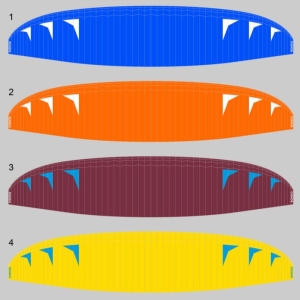
Related products
-
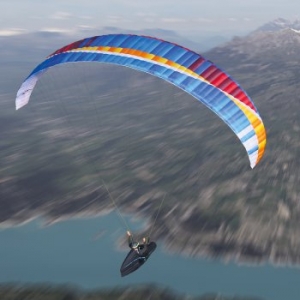
BGD Lynx 2
$5,200.00 This product has multiple variants. The options may be chosen on the product page -
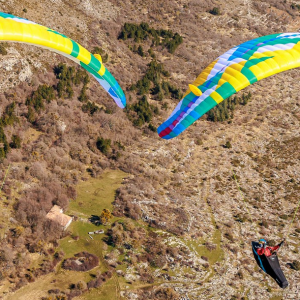
BGD Breeze
$4,700.00 This product has multiple variants. The options may be chosen on the product page -

Niviuk Skin 3
$2,995.00 This product has multiple variants. The options may be chosen on the product page -
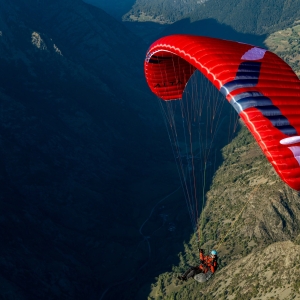
Ozone Alta
$4,390.00 This product has multiple variants. The options may be chosen on the product page
